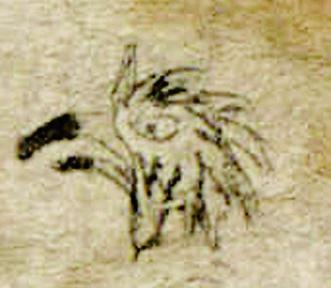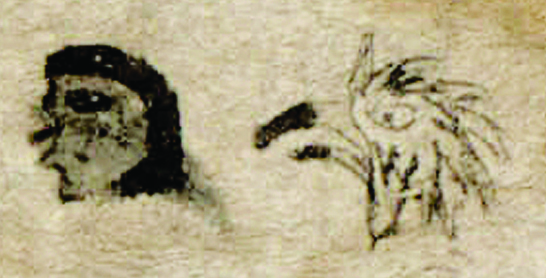Cuauhtli (BMapI47)
This painted black-line drawing of the simplex glyph for the personal name Cuauhtli (“Eagle”) is attested here as a man’s name. It shows the head of an eagle in profile, facing left toward the head of the man whose name this is. The eagle has a large open eye, spiky feathers coming off its head, and dark tips on its open beak.
Stephanie Wood
Eagles are typically shown with their beaks open and spiky feathers on their heads. Sometimes the beaks are painted yellow, apparently when paint was available. Cuauhtli is a day name in the 260-day religious divinatory calendar.
Stephanie Wood
This glyph is not glossed; the decipherment of the glyph comes from Gordon Whittaker’s contribution to the study by Mary E. Miller and Barbara E. Mundy (2012).
c. 1565
Jeff Haskett-Wood
áquilas, picos, plumas, calendarios, tonalpohualli, nombres de días, nombres de hombres

cuauh(tli), eagle, https://nahuatl.wired-humanities.org/content/cuauhtli
Águila
Stephanie Wood
Beinecke Map/Codex Reese, section 8, no. 47 in the Whittaker study (published in the Miller/Mundy book, 2012), and see the original at: https://brbl-dl.library.yale.edu/vufind/Record/3600017
The Bodleian Libraries, University of Oxford, hold the original manuscript, the MS. Arch. Selden. A. 1. This image is published here under the UK Creative Commons, “Attribution-NonCommercial-ShareAlike 3.0 License” (CC-BY-NC-SA 3.0).




